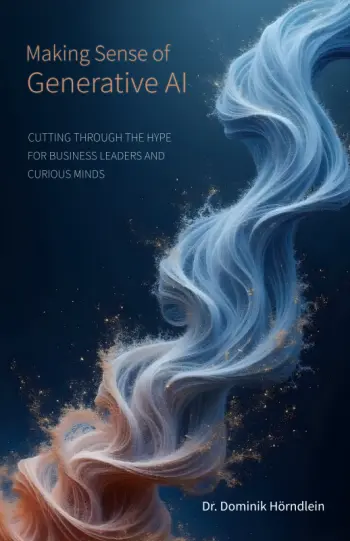Bubble or Revolution: What history tells us about today's GenAI hype

When the Dot-Com bubble burst in 2000, it wiped out $5 trillion in market value. Yet today, the internet has transformed business more profoundly than even the optimists imagined. As we face another wave of technological hype with generative AI, we see similar patterns of extreme optimism and skepticism about the future. Thus, what can we learn from previous tech revolutions for the future of the generative AI hype?
Three Key Lessons from History
First: timelines are always wrong. As Bill Gates famously said: "We always overestimate the change that will occur in the next two years and underestimate the change that will occur in the next ten." One famous example that underlines this is given by how e-commerce changed the way we buy things. During the Dot-Com bubble, plenty of web-based stores grew rapidly after pulling in millions of dollars of investments in a short time. However, most of them went bankrupt as they couldn't deliver on the promises they made. Nevertheless, e-commerce has taken off, only at much larger time scales than anticipated.
Second: business models matter more than technology. The mentality of "growth over profits" is popular, and drives the narrative of moving as fast as possible to be the one winner in your business niche. When sceptics highlight the need for a sustainable business model, established business metrics have often been flagged as outdated and not relevant any more in various hypes. In the long term, however, the companies which succeeded have rarely been the first-movers, but ones which have a clear path to profitability. As an example, look at Amazon. Though they were following a strong growth strategy, they always had a business strategy on how to get profitable. We all know that this strategy has succeeded.
Third: infrastructure investments create long-term value. During the Dot-Com bubble, $ 500 billion were invested into telecom infrastructure. Although these investments seemed exaggerated when the bubble burst, they laid the foundation for today’s digital economy. Therefore, investments during a hype should not only be valued by whether start-ups survive the hype, but also by newly established infrastructure from which societies will profit in the long-term.
These insights aren't unique to the Dot-Com era. The US Green Tech bubble of 2006-2011 further validates these patterns. While many heavily funded startups failed due to overoptimistic timelines and unsustainable business models, the infrastructure investments laid the foundation for today's renewable energy revolution. Similarly, the smartphone revolution that began in 2007 succeeded not because of first-mover advantage - remember Blackberry? - but through sustainable business models and realistic development timelines. Companies like Apple and Android focused on building lasting value rather than just rapid growth
What it means for the future of GenAI
AI optimists keep predicting how a super-intelligent artificial general intelligence will revolutionize many aspects of our lives in only a few years from now. As Sam Altman puts it, it will bring us "a personal AI team (…) working together to create almost anything we can imagine." This is reminiscent of timelines that were too optimistic in any hype. Therefore, we should take such predictions seriously, but don't expect it to realize inside the next years, as promised.
Further, the companies that will drive the GenAI-backed future will be those which can realize business value through sustainable business models - bright visions of the future alone should raise skepticism. Moreover, we should also be aware of the differences in how much money is invested into GenAI-focused companies. Irrespective of whether we are facing a bubble these days or not, investments into IT infrastructures that power AI models will be investments into the future in any case. Thus, from a European perspective, it should worry us that other regions are investing much more.
Business implications
Overall, it will be crucial to understand where the GenAI hype will drive us, and invest into according infrastructure and capabilities. This will create lasting value, even if the immediate hype cycle fades.
History suggests that while today's boldest AI predictions may be wrong about timing, they might actually underestimate the long-term impact. The key is distinguishing between hype and fundamental value.
This historical perspective is just one of several frameworks I provide in my new book Making Sense of Generative AI (and I reflect on more historical examples than the Dot-Com hype in it). If you're trying to separate AI hype from reality in your business decisions, the book offers clear guidance through complex topics like how generative AI really works, what makes it different from traditional AI, and how to identify which use cases will create lasting value for your business. Using simple language and practical examples, it helps understand not just what's happening with AI today, but how to navigate its future impact on their organizations.
Find it at Amazon or Apple Books.
